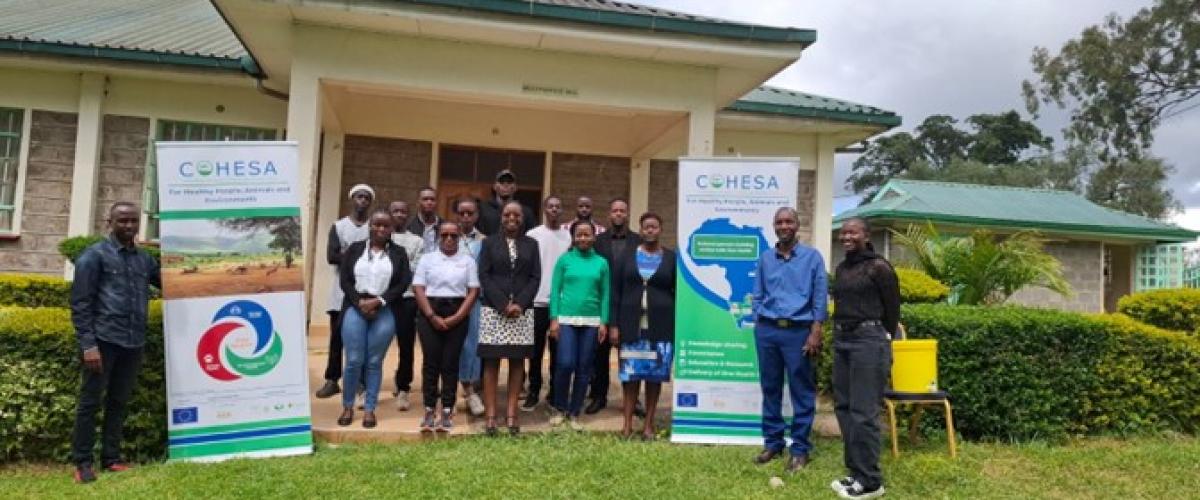
Despite the existence of farm-biosecurity guidelines developed by Kenya's Ministry of Agriculture and Livestock Development to prevent disease and reduce antimicrobial use in poultry production, awareness and implementation remain low among small-scale broiler farmers in Kajiado North Sub- County. Improved adoption of these practices is expected to lower disease incidence, reduce reliance on antibiotics, and mitigate antimicrobial resistance (AMR), in line with Kenya’s National Action Plan on prevention and containment of antimicrobial resistance (2022–2027) and global One Health priorities.
Capacity building
A one-day enumerator training was held on Thursday, May 22, 2025, at the Ngong Veterinary farm, Kajiado County. The training was part of an ongoing research project to strengthen biosecurity practices and reduce reliance on antibiotics in broiler chicken farming. This research addresses a critical gap by evaluating the impact of training and uptake of contextualized biosecurity measures on poultry health, productivity, and antimicrobial use. It is implemented by the University of Nairobi as part of the Capacitating One Health in Eastern and Southern Africa (COHESA) project focusing on delivering practical One Health solutions through strengthened infection prevention and control measures in animal production systems.
The session in Ngong provided an overview of the project and its alignment with Kenya’s farm biosecurity guidelines for poultry production, National action plan on prevention and containment of antimicrobial resistance and equipping enumerators with the skills necessary to conduct field surveys using KoboCollect, a mobile-based digital data collection tool. During the training, the importance of biosecurity measures in preventing disease and improving poultry productivity was emphasized. The training was conducted through group discussions, practical sessions and mock exercises simulating real-world data collection, including farm entry/exit protocols, obtaining informed consent, and biosecurity compliance, reinforcing both technical and interpersonal skills.

Eighteen individuals participated in the training, including 5 project team members and 13 enumerators. Based on their performance, engagement, and recommendations from the Sub- County veterinary officer, 10 enumerators were selected to participate in the project field data collection phase. These enumerators demonstrated both technical competency and a strong understanding of their role in supporting the project’s broader goals.
Data collection and way forward

Following the training, the enumerators collected data from 40 broiler farmers using KoboCollect. Key informant interviews with model farmers, agrovet specialists and a County Veterinary official provided valuable expert insights into the systemic and operational challenges affecting antibiotic usage in broiler farming. Disaggregated focus group discussions for youth, women and men were also conducted to deepen understanding of farmer attitudes, knowledge, and behaviors regarding biosecurity and antimicrobial use. The data gathered is being analyzed and will be crucial in assessing current biosecurity practices and antibiotic usage patterns on farms.